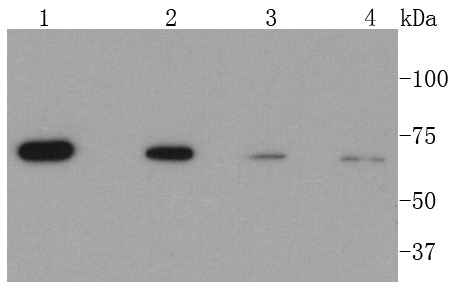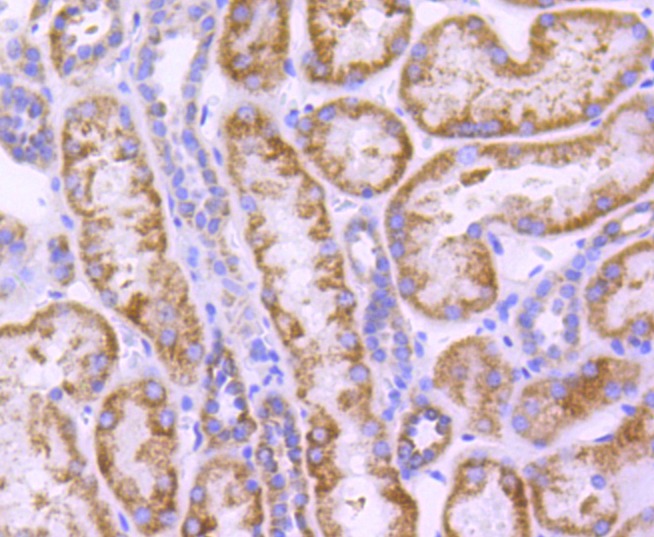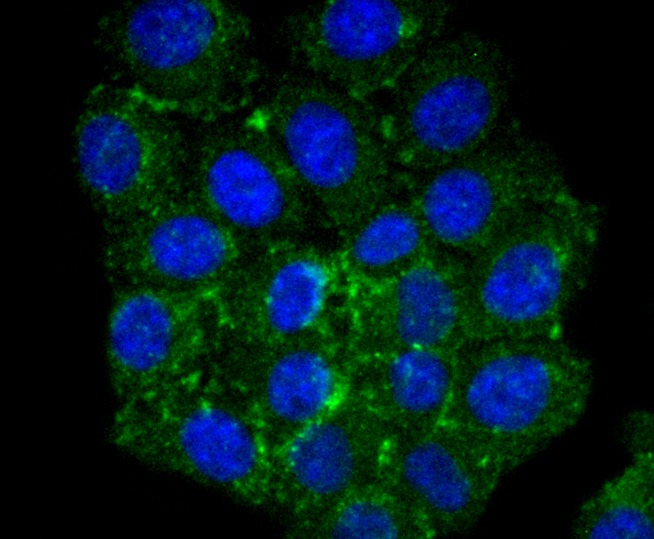Shopping Cart
Remove All Your shopping cart is currently empty
Your shopping cart is currently empty
Anti-CPT2 Antibody (3I417) is a Rabbit antibody targeting CPT2. Anti-CPT2 Antibody (3I417) can be used in ICC/IF,IHC,WB.
| Pack Size | Price | USA Warehouse | Global Warehouse | Quantity |
|---|---|---|---|---|
| 50 μL | $298 | 7-10 days | 7-10 days | |
| 100 μL | $496 | 7-10 days | 7-10 days |
| Description | Anti-CPT2 Antibody (3I417) is a Rabbit antibody targeting CPT2. Anti-CPT2 Antibody (3I417) can be used in ICC/IF,IHC,WB. |
| Synonyms | mitochondrial, CPT2, CPT1, Carnitine palmitoyltransferase II (CPT II), Carnitine O-palmitoyltransferase 2, mitochondrial |
| Ig Type | IgG |
| Clone | 3I417 |
| Reactivity | Human,Mouse,Rat |
| Verified Activity | 1. Western blot analysis of CPT2 on different lysates using anti-CPT2 antibody at 1/1,000 dilution. Positive control: Lane 1: Hela, Lane 2: 293, Lane 3: HepG2, Lane 4: NIH/3T3. 2. Immunohistochemical analysis of paraffin-embedded human liver cancer tissue using anti-CPT2 antibody. Counter stained with hematoxylin. 3. Immunohistochemical analysis of paraffin-embedded human kidney tissue using anti-CPT2 antibody. Counter stained with hematoxylin. 4. Immunohistochemical analysis of paraffin-embedded mouse kidney tissue using anti-CPT2 antibody. Counter stained with hematoxylin. 5. ICC staining CPT2 in HepG2 cells (green). The nuclear counter stain is DAPI (blue). Cells were fixed in paraformaldehyde, permeabilised with 0.25% Triton X100/PBS. 6. ICC staining CPT2 in SW480 cells (green). The nuclear counter stain is DAPI (blue). Cells were fixed in paraformaldehyde, permeabilised with 0.25% Triton X100/PBS.       |
| Application | |
| Recommended Dose | WB: 1:500-1000; IHC: 1:50-200; ICC/IF: 1:50-200 |
| Antibody Type | Monoclonal |
| Host Species | Rabbit |
| Construction | Recombinant Antibody |
| Purification | ProA affinity purified |
| Appearance | Liquid |
| Formulation | 1*TBS (pH7.4), 1%BSA, 40%Glycerol. Preservative: 0.05% Sodium Azide. |
| Research Background | The mitochondrial β-oxidation of long-chain fatty acids is initiated by the sequential action of carnitine palmitoyltransferase (CPT) I (outer membrane and detergent labile) and II (inner membrane and detergent stable), together with carnitine carrier. CPTI catalyzes the first reaction in the transport of long-chain fatty acids from the cytoplasm to the mitochondrion, a rate-limiting step in beta-oxidation. Two types of CPTI are known, the liver (CPTIA) and muscle (CPTIB) isoforms. The muscle type protein is specially expressed in heart and skeletal muscle. Membrane-bound CPTI, but not CPTII, is inhibited reversibly by malonyl-coenzyme A (CoA). Unlike CPTII, CPTI requires membrane integrity for catalytic function. In addition, glutamic acid 3 and histidine 5 are necessary for malonyl CoA inhibition and binding to liver CPTI, but not for catalytic activity. |
| Conjucates | Unconjugated |
| Immunogen | Recombinant Protein |
| Uniprot ID |
| Molecular Weight | Theoretical: 74 kDa. |
| Stability & Storage | Store at -20°C or -80°C for 12 months. Avoid repeated freeze-thaw cycles. |
| Transport | Shipping with blue ice. |
| Size | Quantity | Unit Price | Amount | Operation |
|---|

Copyright © 2015-2025 TargetMol Chemicals Inc. All Rights Reserved.